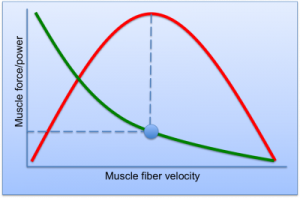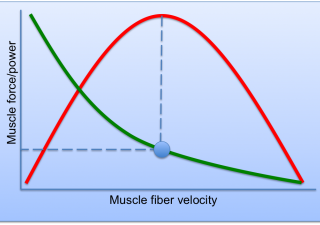Power is a good thing. It’s what allows us to lift something heavy, hit something hard, throw something far, run/row/cycle/swim fast and jump high. Power is the single most important variable in the ‘fast lifts’, Olympic Lifts; Clean and Jerk and Snatch. These two movements are unrivalled in their requirement of, and ability to develop, power. Performed at higher repetitions and at a lighter weight, they are also effective in improving muscular and cardiorespiratory endurance due to their high muscle recruitment.
For the physics minded:
POWER = (FORCE X DISTANCE) / TIME
For the non physics minded, basically power is how fast a load can be moved a certain distance. Moving large loads, long distances, quickly maximises power. This is a statement that will be familiar to many CrossFitters.
But these three elements (force, distance and time) trade off against each other. For ease of explanation, let’s call force ‘load’, or ‘weight’ (again, for the physics minded, force = mass x acceleration).
If the weight is high, it can’t be moved as far (distance), and it can’t be moved as fast (time). This leads to less power output.
Power can be trained however, and by graphing force and power, we can determine the force (or weight) required to maximise power.
On the following graph, power is graphed using the red parabola. You can see that at a very slow fibre velocity (which we’ll call speed) and a very fast fibre velocity, power is low. The green line is force (weight). At low speeds, force is high, while at high speeds, force is low. This is why a heavy deadlift is slower than a light deadlift.

But here comes the cool part. We want to maximise power right? So if we draw a line down from max power (the top of the red curve), the point at which is hits the green curve (force) is the point where power is maximised. It’s the ideal combination of weight and speed to maximise power. Not only is power maximised at this point, but training at this point will create the greatest changes in power.
So what’s the magic number? Power is optimal at 30% of maximum force. So if you can deadlift 100kg, deadlifting 30kg FAST will create the greatest improvement to your power. Simply multiply your one rep max for any exercise by 0.3, and this is the load you should be using to maximise power. In terms of repetitions to complete, as soon as you feel your speed drop, stop. You should be somewhere in the region to three to ten reps, depending on your muscle fibre type and the exercise.





